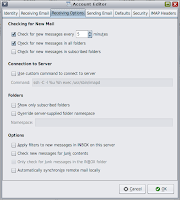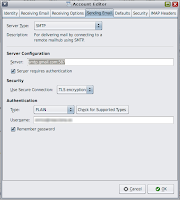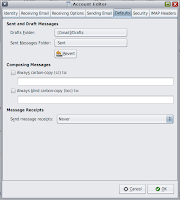
Categorizing things like
cuisine may be challenging, if not impossible. Art cannot be classified and categorized with algorithms. But, there surely are
best practices you cannot ignore including when doing
art. And you should know that the perfect cup of tea is artwork. Or, at least, good craftsmanship.
Didn't you know that? Or perhaps you don't even like tea? Well, maybe you just drank canned and over-edulcorated cold tea or, worse, some cup of hot water with an industrial low quality tea bag. No, that's not tea. The same way an American coffee is not an Italian espresso.
Let's see if I can help you discover your hidden love for tea or, at least, help you enjoy a healthy and flavored cup of tea.
The tools
Every craftsman needs its tools. To make a good cup of tea you need (in no particular order):
- Patience.
- Good quality tea.
- Good quality water (oh yes).
- A kettle.
- A teapot.
- An infuser.
- Experience.
The tea
First, the
obvious: the perfect tea cup only comes with high quality tea. Don't shop for mainstream tea bags (that's just finely ground leaves and who knows what). There are higher quality tea bags but that aren't so easily found as tea leaves. Determining the quality of a leaf isn't a newbie's job, even if you can follow the suggestions I'll give you in the Tea thread.
Now, tea is just a name for the leafs of a class of plants:
Camellia Sinensis. You can find plenty of different types of teas out there and the first thing you should be aware of are the basics. Maybe you know that there's black, green, red (and God knows what else) tea on the market. Yes, but the plant is just the same. In
another series of posts I'm writing about the kinds of tea and its classifications.
I cannot tell you which tea to choose, that's a matter of taste! If you absolutely don't know where to start, go to a local tea seller and buy small bags of different types: at least one green and one black. Be aware, moreover, that tea shops sell a great number of flavored tea blends, some of which are real classic, such as
Earl Grey black tea, which is flavored with
bergamot orange essential oil. Personally, I regularly consume:
- Earl Grey (Black tea).
- Gunpowder (Green tea).
- Gunpowder and fresh mint (blended at home)
Discovering new flavors and blends is part of the magic and it might be your game for the years to come!
Water
Water is the other great ingredient: you must start with fresh and good water. If you don't like your tap water, then use bottled water. Bad water, bad tea. I also said
fresh water because heaters might extract oxygen from water, which is fundamental during the flavor extraction process.
Heating water in the kettle

Heating water is a delicate process: depending on the type of tea you're gonig to brew, water must be heated at a recommended temperature. Basically, the less oxidized the tea is, the colder the water. Black tea requires rolling boil while green teas require an inferior temperature.
Please, don't go around with thermometers! Rolling boil is easy to recognize, and must only be used for completely oxidized teas. Also remember that boiling water oxygen level get lower, so don't let the water boil for a long time nor heat twice the same water. That would spoil your perfect cup of tea!
Gentler teas, such as white and green, are easily
burnt by too hot a water: you'll learn to recognize immediately the
bitter taste such tea assumes. Your taste will also play the game: I learned with time the exact temperature for each of the teas I drink. The first times you'll experiment with it, take note on the bags you bought.
A small resume may be this (temperatures are approximate):
- Green/White teas: 160/180 F (70/80 C)
- Oolong tea: 190 F (90 C)
- Black tea: 212 F (100 C)
At 70 F, more or less, water begin to steam and, if you open the kettle, will notice small bubbles starting to rise to the surface. Since then, you can easily make an estimate and begin
to learn your kettle.
The quantity of tea you're going to steep depends on the water you're going to use: a
regular tea cup is 200 ml. You can just weigh your favorite mug and determine where's the imaginary 200ml line. Some mugs, moreover, come with some illustration on the inner side to indicate it. Look into your mugs and if you're the happy owner of one of these!
The teapot
While waiting for your water to heat, you can go preparing you tea pot. The tea pot, for the water not to cool too early, must be pre-heated. You could use some of the water of the kettle, but in the meantime that water would be cooling off. It would be more difficult to calculate how much water to pour into it, also. Not too bad: just pre-heat it with hot water from the tap, then rinse well.
Once the teapot is ready, throw inside the tea. The correct quantity, guess what? You've got to experiment! It depends on the quality of the tea, on its freshness, on its kind and, of course, on your tastes! The usual dosis is 3 gr (a level tea spoon) per
mug.
Brewing your tea
There are multiple brewing techniques:
- Loose leaves in a teapot
- Mug infusers
- French presses
- Tea balls
One thing to remember when brewing your perfect cup of tea is that the leaves have to unfold and during the process will rise their volumes. Moreover, leaves should be left
free to move during the infusion for the flavor extraction process to be effective. All previous methods, except tea balls, are fine and present no problem: I always found tea balls too small and ineffective. If you are going to brew more than one cup of tea, consider using the classic teapot or a French press. If you're brewing just a cup, consider buying a good mug infuser, or basket filter taking into account that they don't fit well into every mug.
Steep time
Now your tea leaves are unfolding inside the warm water. It's a beautiful process to look at and gives even more
taste to your perfect cup of tea! If you're starting to familiarize with that particular kind of tea, you can use a spoon and try the tea every bunch of seconds to appreciate how its taste evolves and determine when it's
ready for you. You'll also familiarize with the point of no return: that's where you're perfect cup isn't such any longer. Consider as a guidance the following steep times to begin with:
- Low oxidation teas: 2 to 3 minutes.
- High oxidation teas: 4 to 5 minutes.
Take into account, also, that leaves must be free to move but you must not stir them (let alone squeeze them!), not even gently with a spoon. It's too typical an error which only gets more tannins released, spoiling the flavor of your tea.
Conclusion and tips
You can now start and prepare your first cup of tea! I hope you enjoy it. The last tip I'll tell you is a consequence of what you read in
Steeping time. If you're going to prepare more tea and drink it over time,
don't let the tea in the teapot with the leaves. Remove it, instead.














